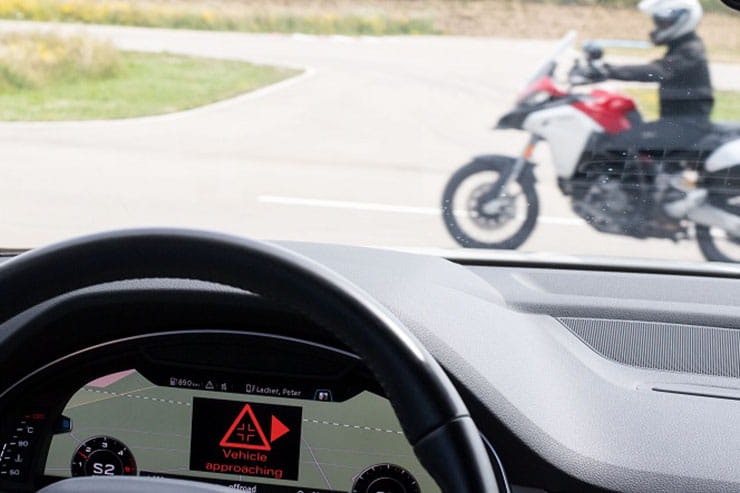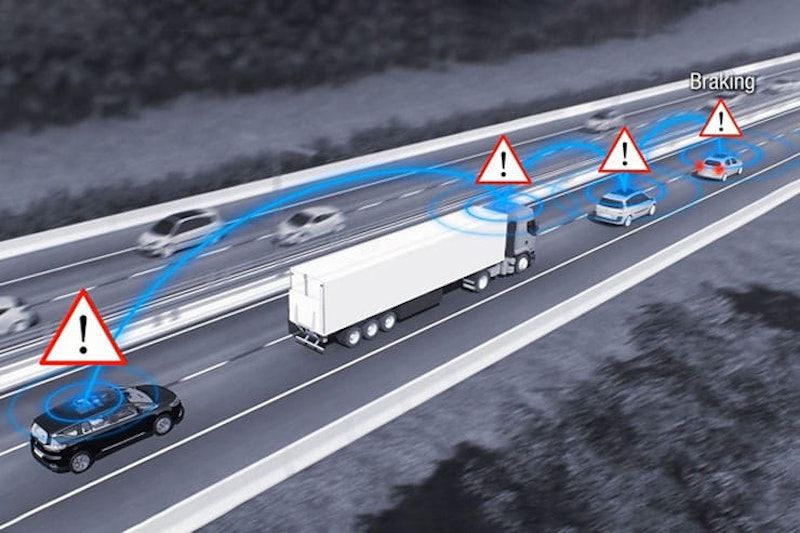Court setback for V2V safety technology
By Ben Purvis
Motorcycle Journalist
15.08.2022
For literally decades car and motorcycle makers have been promising the development of vehicle-to-vehicle communication technologies – allowing vehicles and roadside infrastructure to ‘talk’ to each other in an effort to make traffic flow more smoothly and massively reduce the chances of a crash.
It’s a noble idea, and one that’s clearly within the scope of existing tech. Demonstration projects and widescale collaboration between rival vehicle makers have repeatedly shown how the idea of V2V (vehicle-to-vehicle) and V2X (vehicle-to-everything) systems can use short-range radio communication technology, similar to Wi-Fi, to allow prototype cars and bikes to build a picture of their environments and the moving traffic in them, predicting and preventing crash situations before they occur. However, the whole concept of V2V and V2X has taken a hit with a legal ruling from a US appeals court that will allow part of the radio spectrum previously reserved for the technology to be turned over to other uses.
In both Europe and the USA, the 5.9GHz band has been set aside for V2V and V2X technology for years, with the US Federal Communications Commission (FCC) reserving a 75Mhz slice of the spectrum (5.850GHz to 5.925GHz) specifically to be used by so-called ‘Intelligent Transportation Systems’ (ITS) as long ago as 1999. In Europe, a similar part of the spectrum (5.855GHz to 5.925GHz) is reserved, with the lower 20MHz for ‘non-safety’ ITS and the upper 50MHz of the range for safety related ITS.
However, in the States the Court of Appeals for the District of Columbia Circuit has upheld a previous decision by the FCC to open up the 5.9GHz band to wider uses, essentially making most of the band impossible for ITS systems to adopt, as it will become susceptible to interference from whatever other radio equipment is operating on the same frequencies.
It means that the lower 45MHz of the band will be available for unlicenced devices to use, like Wi-Fi, leaving just a slim 30MHz remaining for vehicle-to-vehicle communication.
The Intelligent Transport Society of America and American Association of State Highway and Transportation Officials petitioned against this decision, but have now lost in the court, with the judge in the case stating: “Several groups that want to retain their old use of the reallocated spectrum argue that the FCC’s reallocation was arbitrary and capricious. It was not.”
He went to say that after the band was reserved for ITS, companies promising V2V systems failed to deliver, saying “The FCC allocated that spectrum in 1999… For the next twenty years, intelligent transport systems did not develop as the FCC hoped they would.”
He pointed out that as of 2020, no commercially available vehicle used the 5.9GHz band for any safety features, and that instead we’ve seen a host of other technologies like radar, cameras and other sensors emerging to allow the adoption of safety systems including autonomous braking and lane keeping.
Although 30MHz (5.895GHz to 5.925GHz) will remain allocated to ITS, and the FCC says it’s ‘sufficient for the provision of core vehicle safety related functions’, the petitioners in the case argued that the band would be susceptible to interference equipment using the other 45MHz and that they need more space for ‘yet-to-arrive’ technologies.
Europe and many other areas still have a wider spectrum of the 5.9GHz band reserved for V2V and V2X technologies, worldwide harmonisation on the issue is clearly vital in making a truly cohesive intelligent transport system. With ever more objects becoming ‘connected’ there’s a growing pressure for space in the spectrum (in China, for instance, just 20MHz has been left for V2V) and unless car and motorcycle makers step up to the plate and start really delivering on two decades of unfulfilled promises, the dream of connected vehicles might never become a reality.
Share on social media:

